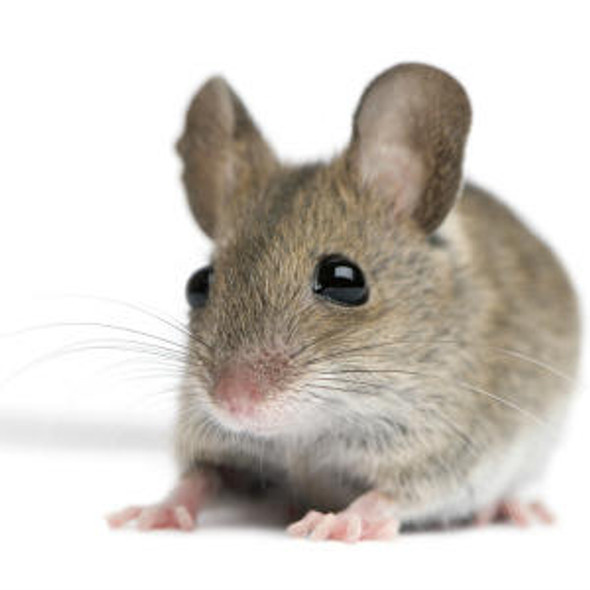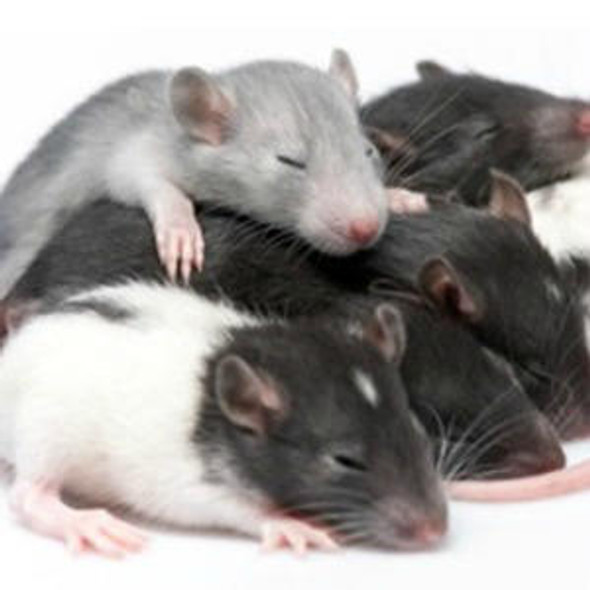Human CCR2 (Chemokine C-C-Motif Receptor 2) ELISA Kit (HUES02828)
- SKU:
- HUES02828
- Product Type:
- ELISA Kit
- Size:
- 96 Assays
- Uniprot:
- P41597
- Sensitivity:
- 0.09ng/mL
- Range:
- 0.16-10ng/mL
- ELISA Type:
- Sandwich
- Synonyms:
- C-C chemokine receptor type 2,CCR2, CD192,cluster of differentiation 192,CC-CKR-2, CCR-2, CCR2A, CCR2B, CKR2, CKR2A, CKR2B, CMKBR2, MCP-1-R
- Reactivity:
- Human
- Sample Type:
- Serum, plasma and other biological fluids
- Research Area:
- Immunology
Description
Human CCR2 (Chemokine C-C-Motif Receptor 2) ELISA Kit
The Human CCR2 (Chemokine C-C Motif Receptor 2) ELISA Kit is designed for the precise measurement of CCR2 levels in human samples including serum, plasma, and cell culture supernatants. This kit offers superior sensitivity and specificity, ensuring dependable and consistent results, making it suitable for various research purposes.CCR2 is a key receptor involved in the regulation of immune responses and inflammation, playing a crucial role in various diseases including cancer, autoimmune disorders, and inflammatory conditions.
By accurately measuring CCR2 levels, researchers can gain valuable insights into the mechanisms underlying these diseases and potentially identify new therapeutic targets.
| Assay type: | Sandwich |
| Format: | 96T |
| Assay time: | 4.5h |
| Reactivity: | Human |
| Detection Method: | Colormetric |
| Detection Range: | 0.16-10 ng/mL |
| Sensitivity: | 0.10 ng/mL |
| Sample Volume Required Per Well: | 100µL |
| Sample Type: | Serum, plasma and other biological fluids |
| Specificity: | This kit recognizes Human CCR2 in samples. No significant cross-reactivity or interference between Human CCR2 and analogues was observed. |
This ELISA kit uses Sandwich-ELISA as the method. The micro ELISA plate provided in this kit has been pre-coated with an antibody specific to Human CCR2. Standards or samples are added to the appropriate micro ELISA plate wells and combined with the specific antibody. Then a biotinylated detection antibody specific for Human CCR2 and Avidin-Horseradish Peroxidase (HRP) conjugate are added to each micro plate well successively and incubated. Free components are washed away. The substrate solution is added to each well. Only those wells that contain Human CCR2, biotinylated detection antibody and Avidin-HRP conjugate will appear blue in color. The enzyme-substrate reaction is terminated by adding Stop Solution and the color turns yellow. The optical density (OD) is measured spectrophotometrically at a wavelength of 450 nm ± 2 nm. The OD value is proportional to the concentration of Human CCR2. The concentration of Human CCR2 in samples can be calculated by comparing the OD of the samples to the standard curve.
| UniProt Protein Function: | CCR2: a seven transmembrane protein closely related to CCR1. Receptor for the MCP-1, MCP-3 and MCP-4 chemokines. Expressed at high levels in primary neutrophils and primary monocytes, and is further upregulated on neutrophil activation and during monocyte to macrophage differentiation. Transduces a signal by increasing the intracellular calcium ions level. Alternative co receptor with CD4 for HIV-1 infection. Two splice-variant isoforms have been described. |
| UniProt Protein Details: | Protein type:Membrane protein, multi-pass; Membrane protein, integral; GPCR, family 1; Receptor, GPCR Chromosomal Location of Human Ortholog: 3p21. 31 Cellular Component: cell soma; integral to plasma membrane; perinuclear region of cytoplasm; dendrite; cytoplasm; integral to membrane; plasma membrane; perikaryon; cytosol Molecular Function:protein homodimerization activity; CCR2 chemokine receptor binding; C-C chemokine receptor activity; chemokine receptor activity Biological Process: positive regulation of T-helper 1 type immune response; viral reproduction; chemotaxis; elevation of cytosolic calcium ion concentration; response to wounding; dendritic cell chemotaxis; cellular homeostasis; inflammatory response; positive regulation of tumor necrosis factor biosynthetic process; cytokine and chemokine mediated signaling pathway; negative regulation of adenylate cyclase activity; JAK-STAT cascade; cellular calcium ion homeostasis; G-protein coupled receptor protein signaling pathway; negative regulation of angiogenesis; positive regulation of interferon-gamma production; negative regulation of T-helper 2 type immune response; positive regulation of interleukin-2 production; innate immune response; cellular defense response; blood vessel remodeling; positive regulation of alpha-beta T cell proliferation; immune response; positive regulation of T cell activation; negative regulation of eosinophil degranulation; positive regulation of inflammatory response |
| NCBI Summary: | This gene encodes two isoforms of a receptor for monocyte chemoattractant protein-1, a chemokine which specifically mediates monocyte chemotaxis. Monocyte chemoattractant protein-1 is involved in monocyte infiltration in inflammatory diseases such as rheumatoid arthritis as well as in the inflammatory response against tumors. The receptors encoded by this gene mediate agonist-dependent calcium mobilization and inhibition of adenylyl cyclase. This gene is located in the chemokine receptor gene cluster region. Two alternatively spliced transcript variants are expressed by the gene. [provided by RefSeq, Mar 2009] |
| UniProt Code: | P41597 |
| NCBI GenInfo Identifier: | 1168965 |
| NCBI Gene ID: | 729230 |
| NCBI Accession: | P41597. 1 |
| UniProt Secondary Accession: | P41597,Q4VBL2, A0AVQ3, B2RMT0, |
| UniProt Related Accession: | P41597 |
| Molecular Weight: | 41,064 Da |
| NCBI Full Name: | C-C chemokine receptor type 2 |
| NCBI Synonym Full Names: | chemokine (C-C motif) receptor 2 |
| NCBI Official Symbol: | CCR2 |
| NCBI Official Synonym Symbols: | CKR2; CCR-2; CCR2A; CCR2B; CD192; CKR2A; CKR2B; CMKBR2; MCP-1-R; CC-CKR-2 |
| NCBI Protein Information: | C-C chemokine receptor type 2; MCP-1 receptor; monocyte chemoattractant protein 1 receptor; monocyte chemotactic protein 1 receptor |
| UniProt Protein Name: | C-C chemokine receptor type 2 |
| UniProt Synonym Protein Names: | Monocyte chemoattractant protein 1 receptor; MCP-1-R; CD_antigen: CD192 |
| Protein Family: | C-C chemokine receptor |
| UniProt Gene Name: | CCR2 |
| UniProt Entry Name: | CCR2_HUMAN |
As the OD values of the standard curve may vary according to the conditions of the actual assay performance (e. g. operator, pipetting technique, washing technique or temperature effects), the operator should establish a standard curve for each test. Typical standard curve and data is provided below for reference only.
| Concentration (ng/mL) | O.D | Average | Corrected |
| 10 | 2.239 2.255 | 2.247 | 2.192 |
| 5 | 1.449 1.457 | 1.453 | 1.398 |
| 2.5 | 0.895 0.867 | 0.881 | 0.826 |
| 1.25 | 0.44 0.476 | 0.458 | 0.403 |
| 0.63 | 0.249 0.223 | 0.236 | 0.181 |
| 0.32 | 0.158 0.136 | 0.147 | 0.092 |
| 0.16 | 0.103 0.103 | 0.103 | 0.048 |
| 0 | 0.054 0.056 | 0.055 | -- |
Precision
Intra-assay Precision (Precision within an assay): 3 samples with low, mid range and high level Human CCR2 were tested 20 times on one plate, respectively.
Inter-assay Precision (Precision between assays): 3 samples with low, mid range and high level Human CCR2 were tested on 3 different plates, 20 replicates in each plate.
| Intra-assay Precision | Inter-assay Precision | |||||
| Sample | 1 | 2 | 3 | 1 | 2 | 3 |
| n | 20 | 20 | 20 | 20 | 20 | 20 |
| Mean (ng/mL) | 0.50 | 0.96 | 3.43 | 0.53 | 0.88 | 3.56 |
| Standard deviation | 0.03 | 0.04 | 0.16 | 0.04 | 0.04 | 0.17 |
| C V (%) | 6.00 | 4.17 | 4.66 | 7.55 | 4.55 | 4.78 |
Recovery
The recovery of Human CCR2 spiked at three different levels in samples throughout the range of the assay was evaluated in various matrices.
| Sample Type | Range (%) | Average Recovery (%) |
| Serum (n=5) | 85-96 | 91 |
| EDTA plasma (n=5) | 89-101 | 94 |
| Cell culture media (n=5) | 88-98 | 93 |
Linearity
Samples were spiked with high concentrations of Human CCR2 and diluted with Reference Standard & Sample Diluent to produce samples with values within the range of the assay.
| Serum (n=5) | EDTA plasma (n=5) | Cell culture media (n=5) | ||
| 1:2 | Range (%) | 96-108 | 98-110 | 87-99 |
| Average (%) | 101 | 104 | 93 | |
| 1:4 | Range (%) | 94-108 | 83-97 | 83-97 |
| Average (%) | 100 | 89 | 90 | |
| 1:8 | Range (%) | 89-103 | 84-98 | 82-94 |
| Average (%) | 94 | 91 | 87 | |
| 1:16 | Range (%) | 91-106 | 84-96 | 84-97 |
| Average (%) | 99 | 89 | 90 |
An unopened kit can be stored at 4°C for 1 month. If the kit is not used within 1 month, store the items separately according to the following conditions once the kit is received.
| Item | Specifications | Storage |
| Micro ELISA Plate(Dismountable) | 8 wells ×12 strips | -20°C, 6 months |
| Reference Standard | 2 vials | |
| Concentrated Biotinylated Detection Ab (100×) | 1 vial, 120 µL | |
| Concentrated HRP Conjugate (100×) | 1 vial, 120 µL | -20°C(shading light), 6 months |
| Reference Standard & Sample Diluent | 1 vial, 20 mL | 4°C, 6 months |
| Biotinylated Detection Ab Diluent | 1 vial, 14 mL | |
| HRP Conjugate Diluent | 1 vial, 14 mL | |
| Concentrated Wash Buffer (25×) | 1 vial, 30 mL | |
| Substrate Reagent | 1 vial, 10 mL | 4°C(shading light) |
| Stop Solution | 1 vial, 10 mL | 4°C |
| Plate Sealer | 5 pieces | |
| Product Description | 1 copy | |
| Certificate of Analysis | 1 copy |
- Set standard, test sample and control (zero) wells on the pre-coated plate and record theirpositions. It is recommended to measure each standard and sample in duplicate. Note: addall solutions to the bottom of the plate wells while avoiding contact with the well walls. Ensuresolutions do not foam when adding to the wells.
- Aliquot 100µl of standard solutions into the standard wells.
- Add 100µl of Sample / Standard dilution buffer into the control (zero) well.
- Add 100µl of properly diluted sample (serum, plasma, tissue homogenates and otherbiological fluids) into test sample wells.
- Cover the plate with the sealer provided in the kit and incubate for 90 min at 37°C.
- Aspirate the liquid from each well, do not wash. Immediately add 100µL of BiotinylatedDetection Ab working solution to each well. Cover the plate with a plate seal and gently mix. Incubate for 1 hour at 37°C.
- Aspirate or decant the solution from the plate and add 350µL of wash buffer to each welland incubate for 1-2 minutes at room temperature. Aspirate the solution from each well andclap the plate on absorbent filter paper to dry. Repeat this process 3 times. Note: a microplatewasher can be used in this step and other wash steps.
- Add 100µL of HRP Conjugate working solution to each well. Cover with a plate seal andincubate for 30 min at 37°C.
- Aspirate or decant the solution from each well. Repeat the wash process for five times asconducted in step 7.
- Add 90µL of Substrate Reagent to each well. Cover with a new plate seal and incubate forapproximately 15 min at 37°C. Protect the plate from light. Note: the reaction time can beshortened or extended according to the actual color change, but not by more than 30min.
- Add 50 µL of Stop Solution to each well. Note: Adding the stop solution should be done inthe same order as the substrate solution.
- Determine the optical density (OD value) of each well immediately with a microplate readerset at 450 nm.






